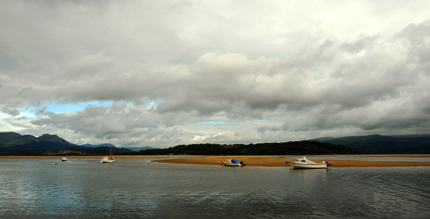Most of us are aware of our planet’s natural water cycle: water continuously going through evaporation, condensation and precipitation processes. Human activities interfere with this cycle when we remove large quantities of water for various purposes, pollute the ground water reserves and destroy forests.
As this cycle is essential for survival of all life on our planet, few would argue that it is our collective responsibility to ensure that we return the water to the natural cycle in a clean state. The urban water cycle tracks the journey of water from the natural reservoirs to the filtration plants and, later, through the waste water treatment and recycling plants.
Here in Sydney, 80% of our water supply is provided by the Warragamba Dam. We also use water from other dams, from the ocean (through the desalination plant at Kurnell) and from the thirty waste water treatment and recycling plants which supply a part of our non-drinking water. After using the water for human activities, the waste water is returned to our waterways in different ways.
Storm water drains
In urban areas, rain water is often prevented from seeping into the ground directly due to hard concrete and paved surfaces like roads, footpaths, driveways and roofs. Instead, all this water flows into small drains which then flow into larger storm water drains. Large pipes carry this water (collectively called storm water) to rivers, creeks and the ocean.

Keeping storm water clean
Since storm water is not treated before it is returned to rivers and the ocean, it is important that it is kept as free from pollutants as possible. Filters and other quality improvement devices are used in large storm water drains to collect rubbish, sediments and other pollutants. In addition, we can each do our bit by:
- Putting all rubbish and pet droppings in bins.
- Keeping driveways and gutters clean and free from leaves and dirt.
- Washing vehicles on the grass to keep detergents from entering the storm water.
- Safely disposing of paints, chemicals, pesticides, oils and other liquids.
Waste water
Waste water refers to the used water that goes down sinks, drains and toilets. This includes water from residential and commercial buildings as well as industries. Since waste water contains water from toilets, laundry water, industrial waste water etc., it contains large amounts of pollutants including human waste, soaps and detergents.
Waste water has to be properly treated before it is allowed to run into our waterways or recycled, and at our treatment plants, waste water passes through several processes.
During primary treatment, the solid wastes are removed from the water by various methods. Fine screens remove most of the solid matter like paper and plastic; then the water passes through a grit tank to remove sand. The water then enters primary sedimentation tanks where human waste sinks to the bottom and greases and oils float to the top and are removed. Some treatment plants treat water up to the primary level only. The treated water, called the effluent, is then passed through pipes into the sea.
Secondary treatment involves the use of good bacteria to further break down the remaining waste. The liquid undergoes another stage of filtration and sedimentation to remove more impurities.
Tertiary treatment involves a final filtration process and then disinfection using ultraviolet light or chlorine. Water recycling plants treat water up to the tertiary level.
Uses of recycled water
Recycled water may be used for a variety of non-drinking purposes like:
- Flushing toilets and watering gardens.
- Watering lawns, golf courses and sports fields.
- Cleaning and manufacturing purposes in industries.
The treated water may also be highly treated and returned to rivers to maintain a healthy water level.
Treating waste water to such a high purification level requires a lot of electricity and resources; we can help reduce the cost of these processes by doing our bit. Here are some simple tips:
- Do not put any rubbish in the toilet or the sink.
- Scrape plates clean before washing them.
- Use a sink strainer to avoid food particles from entering the drain.
- Never put any sort of liquid waste into the sink including oils, fats, paints or other chemicals.
How you can help
Reducing water use at an individual level is one of the most helpful things you can do to keep your waterways clean.
- Repair all leaking taps promptly.
- Don’t keep water running while you brush your teeth or wash dishes.
- Run washing machines and dishwashers on full loads.
- Use the ‘half flush’ whenever possible.
- Install a rainwater harvesting tank and use that water for non-drinking purposes.
Our team at JEDI Plumbing is committed to providing all kinds of plumbing services – from fixing a dripping tap and basic toilet repairs to emergency plumbing projects and rainwater tank installation. For any kind of plumbing job in and around Sydney’s North Shore and Northern Beaches, call us on 0411 774 381.